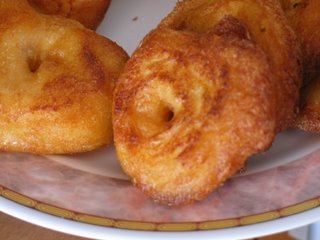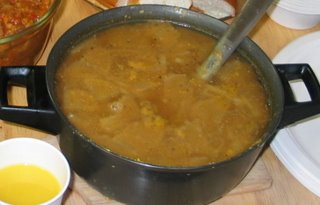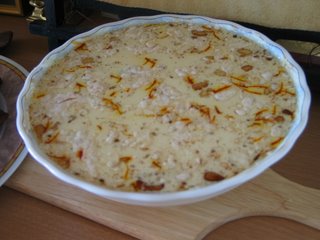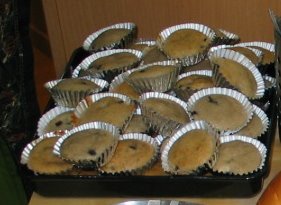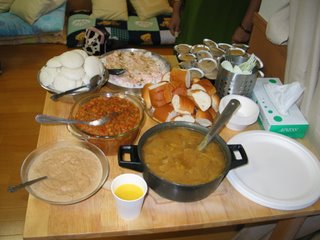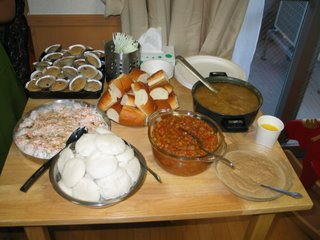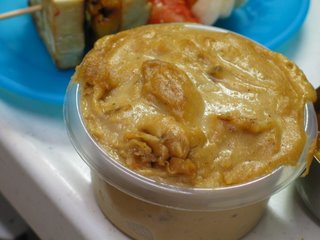Dal Dhokli
All this cold and gloomy weather does inspire me get some fancy cooking done. Fancy?? Hmm.. at our place, anything other than sambar, rasam and vegetable gets classified as fancy cooking!
Absolutely nutritious and delicious too!
Dal Dhokli
serves 4
 2/3 cup wheat flour
2/3 cup wheat flour1/2 tsp ajwain
salt to taste
water to knead
Make a tight dough with all the above (like for pooris).
Roll into slightly thick chappatis (about 2-3mm)
Cut chappatis into 1" strips. Make diagonal cuts and shape like diamonds.
Keep aside.
1.5 cups yellow moong dal
1/2 tsp turmeric
1 onion (chopped fine)
1 tomato (chopped fine)
1/2 cup groundnuts (cooked)
1" piece ginger (grated)
1 green chili (or more, to taste)
2 cloves garlic
1 tsp mustard seeds
1/2 tsp cumin seeds
1 pinch asafetida (hing)
1 tsp coriander powder
1 tsp cumin powder
1/2 tsp garam masala
Salt to taste
Oil for tempering
water, if required, to adjust consistency
chopped coriander leaves
Wash and cook moong dal with turmeric, in plenty of water.
After dal is cooked, stir well till its a smooth blend.
Heat oil. Temper with mustard seeds, cumin seeds and hing. Add whole or chopped green chili.
Add onion and saute till it turns transparent. Add ginger and garlic and continue to saute till the raw smell is gone.
Add tomatoes and cook for 3-4 minutes.
Add cumin, coriander and garam masala powders.
Add the cooked dal and groundnuts.
Adjust salt to required taste.
Bring to a boil, adding water to adjust consistency.
Add the cut chappati bits, a few at a time.
Cover and simmer for 15 minutes, or till the chappati bits are cooked through.
Garnish with chopped coriander leaves.
Serve hot
Notes:
Ideal consistency, prior to adding chappati pieces, would be slightly thin, like tomato sauce. It tends to thicken as it simmers.
I use whole green chilies. It imparts flavour, and at the same time, doesn't make the dish too spicy. Easier to discard if one doesn't want to bite into a piece by mistake :)





